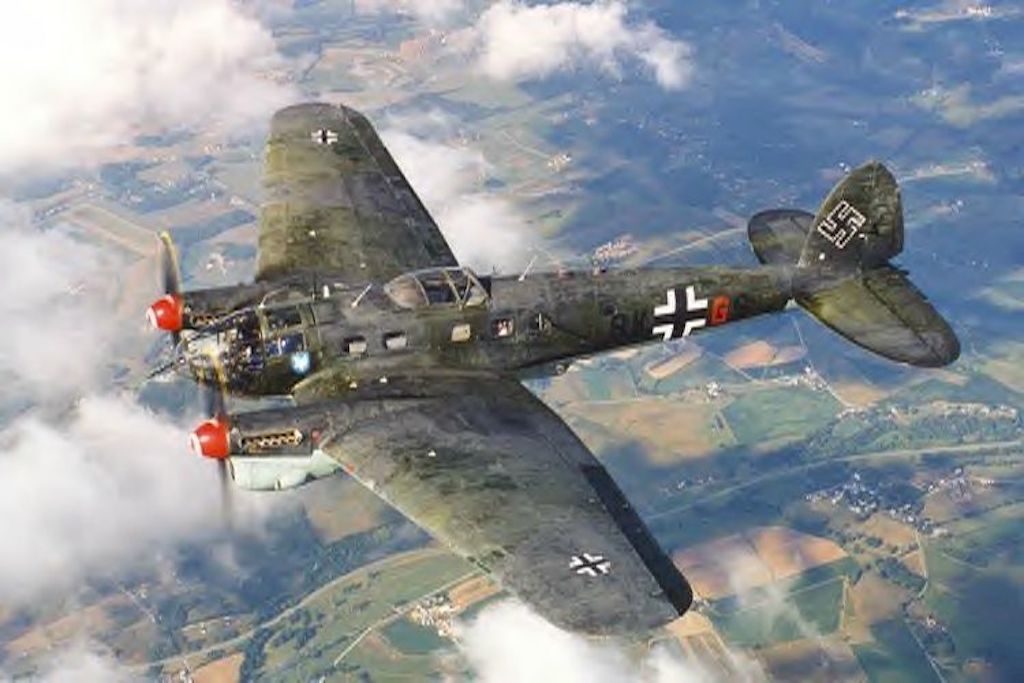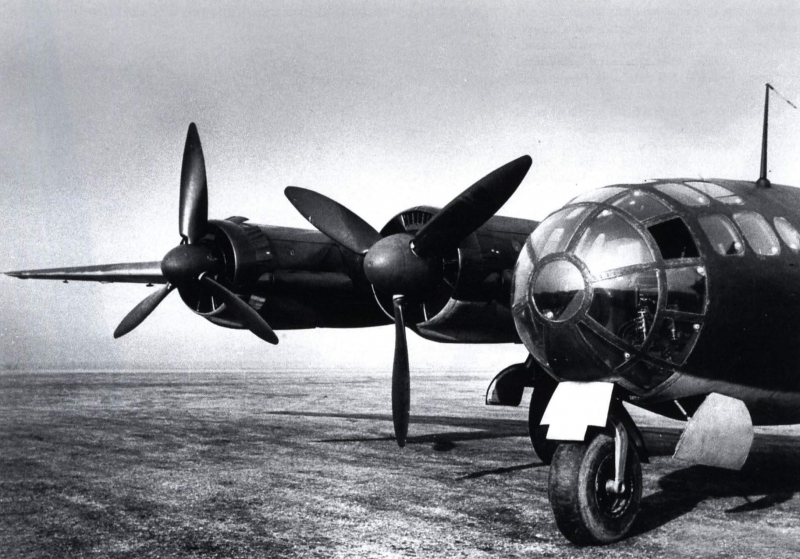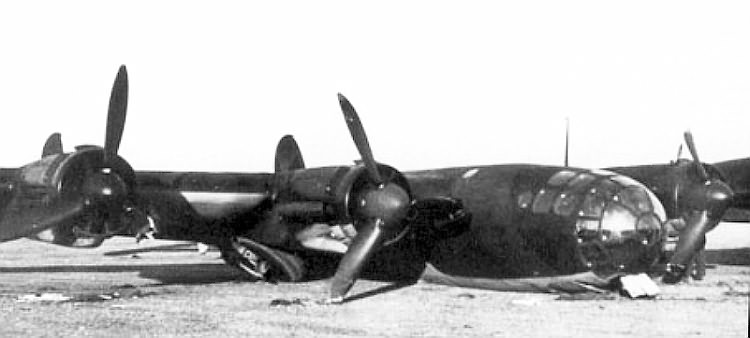

Germany started WWII with the introduction of blitzkrieg. The new lightning warfare called for fast, overwhelming ground attacks supported by dive and light bombers. This combined arms doctrine was extremely effective and allowed the Germans to steamroll across Europe. However, the focus on close air support left the Luftwaffe lacking in terms of long-range strategic bombers.

Due to restrictions on military development following WWI, Germany’s bombers were engineered under the guise of being civilian airliners, hence their focus on lighter bombers with smaller payloads. On the other hand, the allies developed a wide range of bombers including heavy bombers like the legendary American B-17 Flying Fortress and the British Avro Lancaster. Both aircraft carried more than double the payload of the German He 111.
Adolf Hitler was keen to see New York City in flames. However, German U-boats lacked the firepower to cause sufficient damage and the Luftwaffe didn’t have any planes that could do the job. “I completely lack the bombers capable of round-trip flights to New York with a 4.5-tonne bomb load. I would be extremely happy to possess such a bomber, which would at last stuff the mouth of arrogance across the sea,” said Luftwaffe commander-in-chief Herman Göring in 1938. The problem was always the incredible distance a bomber would have to cover to reach New York.
By early 1941, Germany was in an extremely advantageous position in the war. Britain was the only real threat left in western Europe and U-boat wolfpacks hounded the supply convoys that sustained the island nation. Moreover, Portugal allowed German ships to refuel in the Azores. The archipelago provided a more feasible launching point for a trans-Atlantic bomber to reach the American east coast. Hitler himself expressed the need to, “deploy long-range bombers against American cities from the Azores.”
Called the Amerikabomber, the translation of which is extremely literal, the project was drafted up in a 33-page Luftwaffe document in 1942. Major German aircraft designers Messerschmitt, Focke-Wulf, Junkers and Heinkel submitted concepts for the proposed bomber. Messerschmitt’s Me 264 was the first concept to be built and flown. Submitted in May 1942, it carried the heaviest payload at 6.5 tonnes. The Junkers Ju 390 was built, flown, and submitted just after the Messeschmitt, also in May 1942. It had a smaller payload capacity of 5 tonnes. Neither the Heinkel nor the Focke-Wulf concepts made it to production or flight.

The potential effect of a strategic bombing campaign against the United States would have been multi-fold. First, strikes against industrial targets, especially those involved in the aircraft industry, would severely inhibit America’s ability to serve as the arsenal of democracy. Fewer planes going overseas for use by the British and Soviets would mean less resistance to German offensives. Moreover, attacks against the American mainland would force the nation to significantly bolster its air defense systems. This would draw air defense resources that would otherwise be sent to allies overseas. Again, it would make it much easier for Germany to win the war in Europe.
However, with allied bombing targeting Germany’s industrial capability, the development of the Amerikabomber was slowed significantly. Additionally, Hitler developed a stronger interest in other miracle weapons like the V2 rocket. As a result of reduced materials and funding, the Amerikabomber project was abandoned before the war’s end. All of the submissions were deemed too expensive or simply not feasible by 1944. Ironically, Hitler’s pre-war vision of a long-range strategic bomber and New York City in flames was killed by allied bombers like the B-17 and Lancaster.

